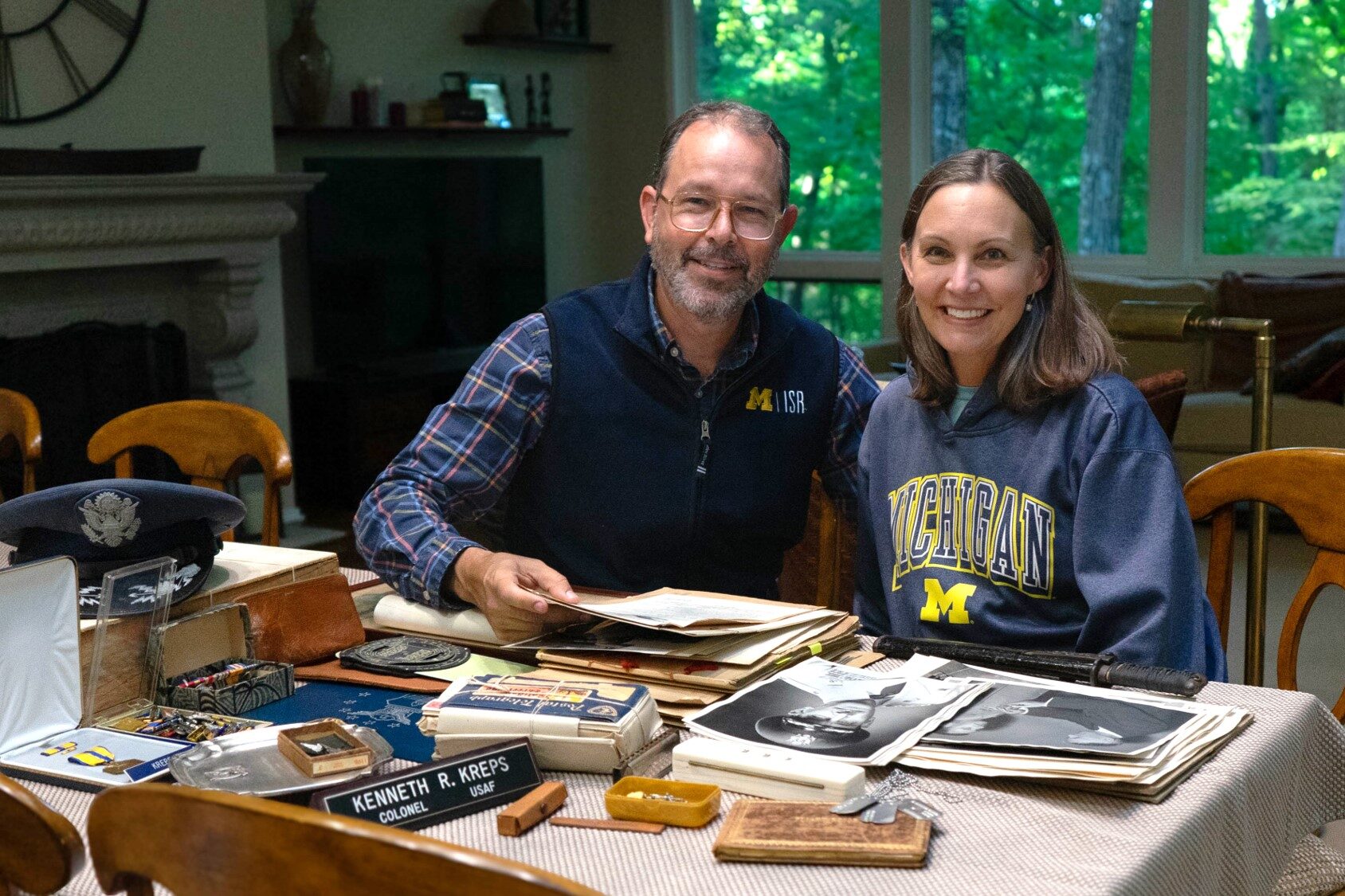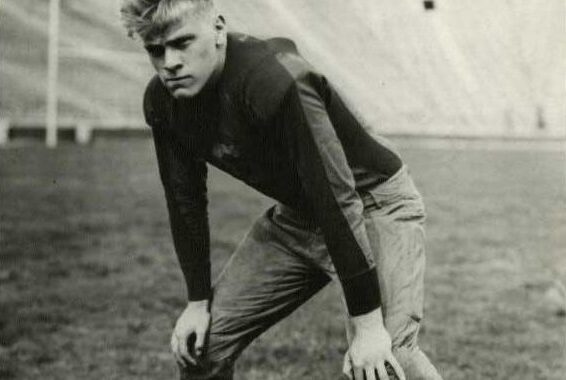A family’s quest for a hero’s ‘war chest’

From undisclosed honors to covert operations, the valiant military exploits of Colonel Kenneth Kreps were veiled in secrecy until a fateful discovery by his descendants. Witness the unveiling of a World War II hero’s saga as his family unpacks a long-lost treasure trove of historic memorabilia.
-
Trackway analysis shows how dinosaurs coped with slippery slopes
U-M researchers and colleagues working in Argentina have discovered how dinosaurs were able to navigate muddy and slippery inclines.
- Plus: Slideshow
-
Game day!
It’s football Saturday! Come join the crowds at the Mudbowl, on State and Packard, the Pioneer High lot, and outside Michigan Stadium.
-
U-M No. 1 in ranking of media/Internet/social media interest
U-M has topped all U.S. universities for the amount of public interest measured by media coverage, Internet traffic and social media mentions, according to an independent national analysis released this week.
-
Record number of U-M inventions reported last year
U-M researchers disclosed 350 new inventions in fiscal year 2009, setting a new record. Despite the state’s economic woes, the university licensed eight new startups in the last fiscal year.
-
U-M among top in nation for producing Fulbright students, scholars
Seven University of Michigan scholars and 28 U-M students have been awarded Fulbright Fellowships for 2009-2010.Among the faculty scholar winners, U-M’s Ann Arbor campus led the country in the U.S. State Department-funded Fulbright awards, along with Michigan State University and the University of Oregon, each receiving seven awards. UM-Flint also produced a Fulbright Scholar.Among the Read more
-
Ross School tops in the U.S. for environmental and social responsibility
The University of Michigan’s Ross School of Business is the best business school in the United States for integrating environmental, social and ethical issues into its MBA program, according to the Aspen Institute’s 2009-10 Beyond Grey Pinstripes report.The biennial survey and ranking of business schools placed the Ross School at No. 2 overall. The Schulich Read more
Columns
-
President's Message
Eureka! A look at the knowledge ecosystem
With $1.86 billion in research funding, U-M is leading the way in everything from energy solutions to artificial intelligence. -
Editor's Blog
A crisis by any other name…
You know what they say about opportunity. It knocks but once before the door slams shut. -
Health Yourself
So much for farm to table … We’ve got lab to table now
Who's ready to eat chicken that scientists 'hatched' in a lab and not from an egg? -
Climate Blue
How to keep your head above uncharted waters
Ricky Rood says goodbye to Floodtown as he guides us through the changing climate.
Commemorating an exceptional presidency
Fifty years ago, at a time of great division and turbulence in the U.S., Gerald R. Ford was sworn in as the 38th president of the United States. President Ford’s legacy is very much alive at the Ford School of Public Policy. This slideshow is inspired by the school’s recent tribute, “A life of public service,” in the Spring 2024 issue of State & Hill magazine. As noted by the editors, the values that distinguished Ford remain highly relevant to policy students today: his lifelong commitment to principled public service, his integrity, and his ability to connect across differences to forge consensus.

















